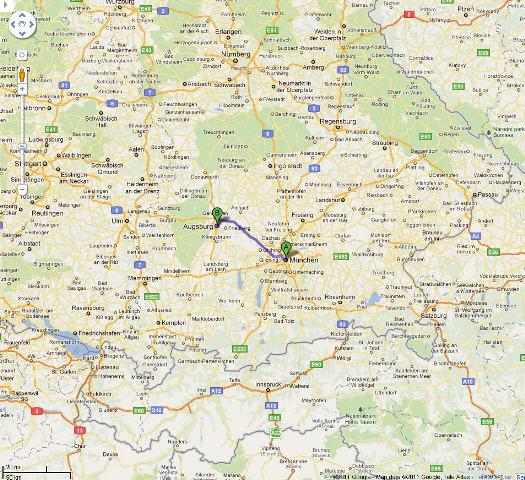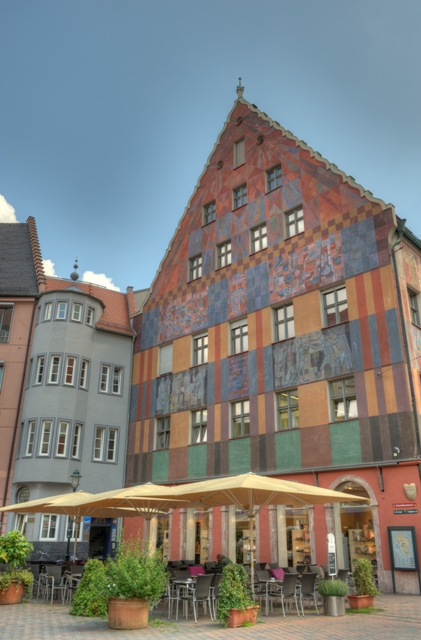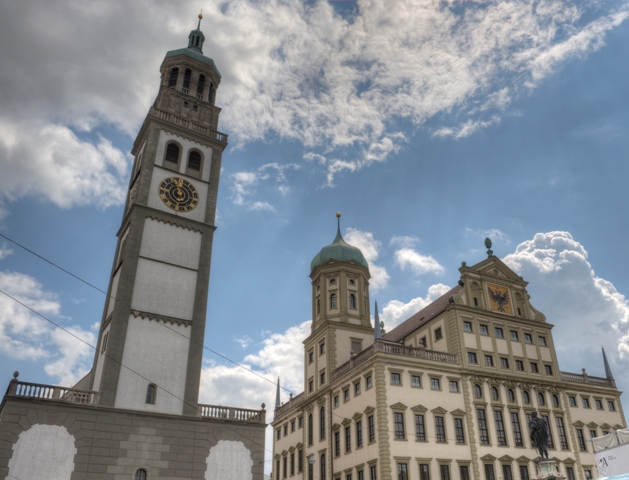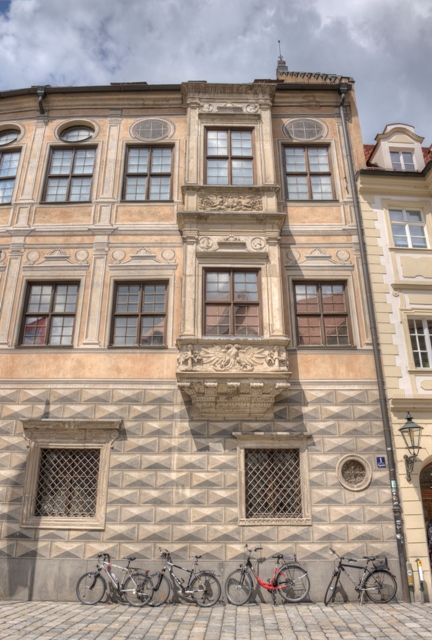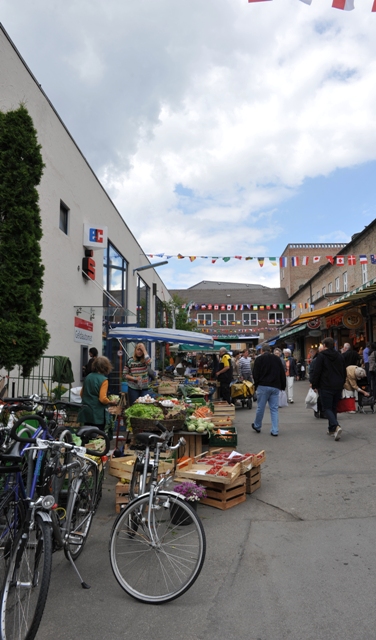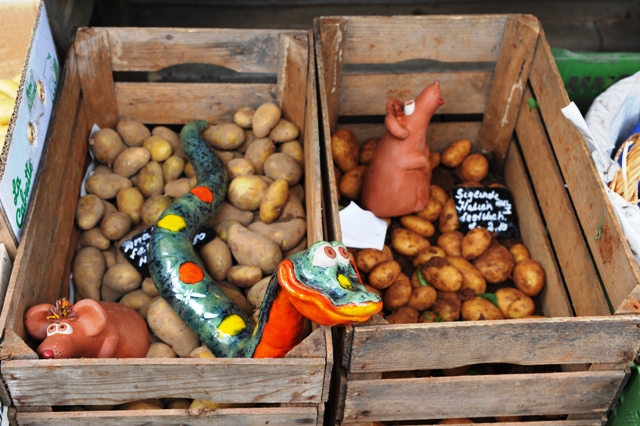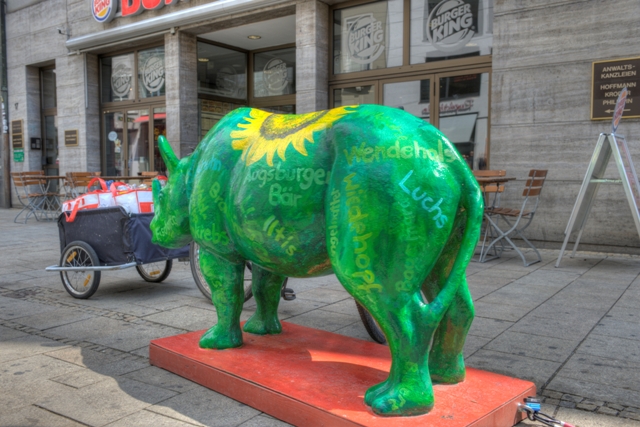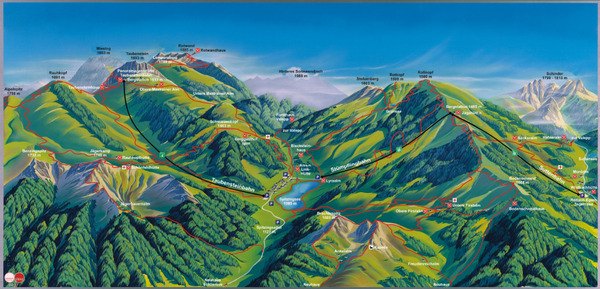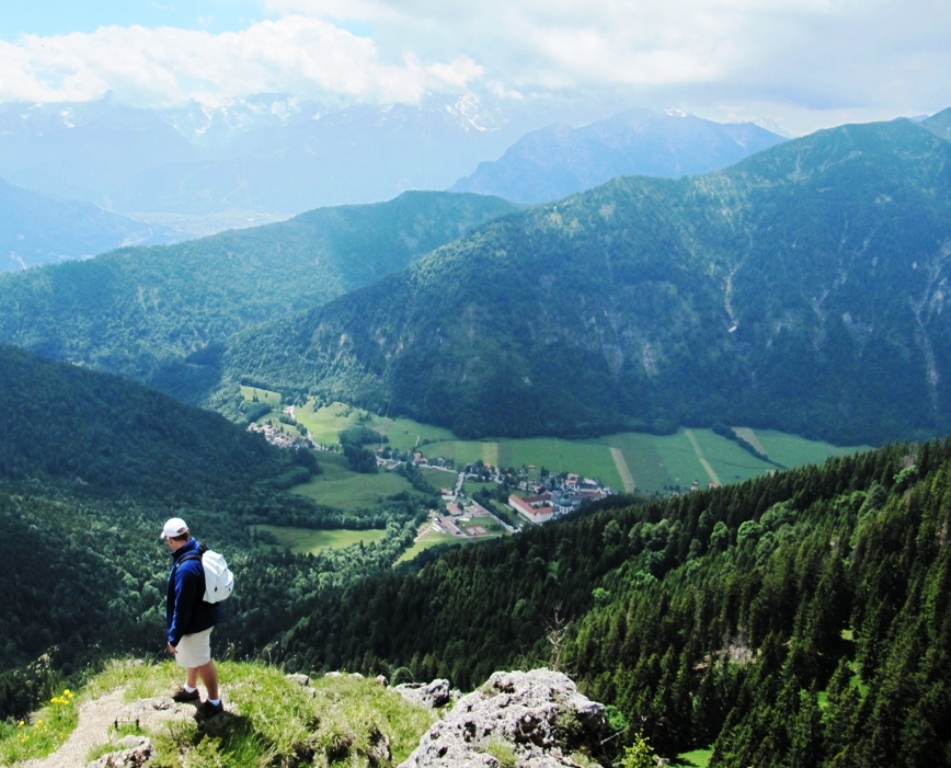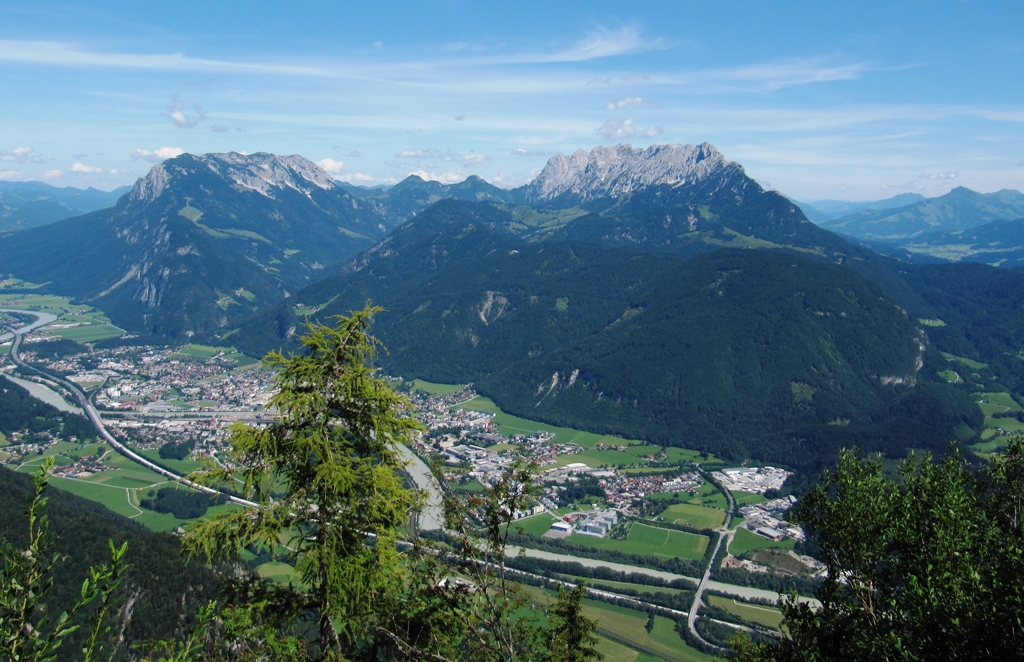In early July, friends of ours from Dallas came to visit! We had to show them a good time, of course, so we rented a car and drove into the Alps for some early Saturday hiking.
We decided the destination would be Salzburgerland - the state (and general area) around Salzburg, Austria. It's quite close to Munich (about 90 minutes with clear traffic).
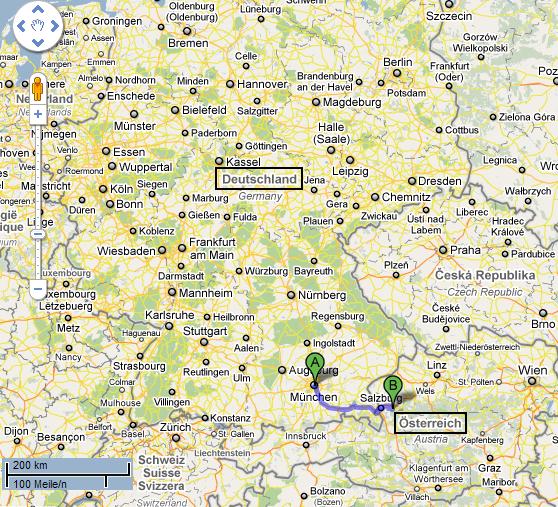
The border between the two countries winds and twists a lot - and in fact from Munich you can be in Austria within 1.5 hours heading either East or South!
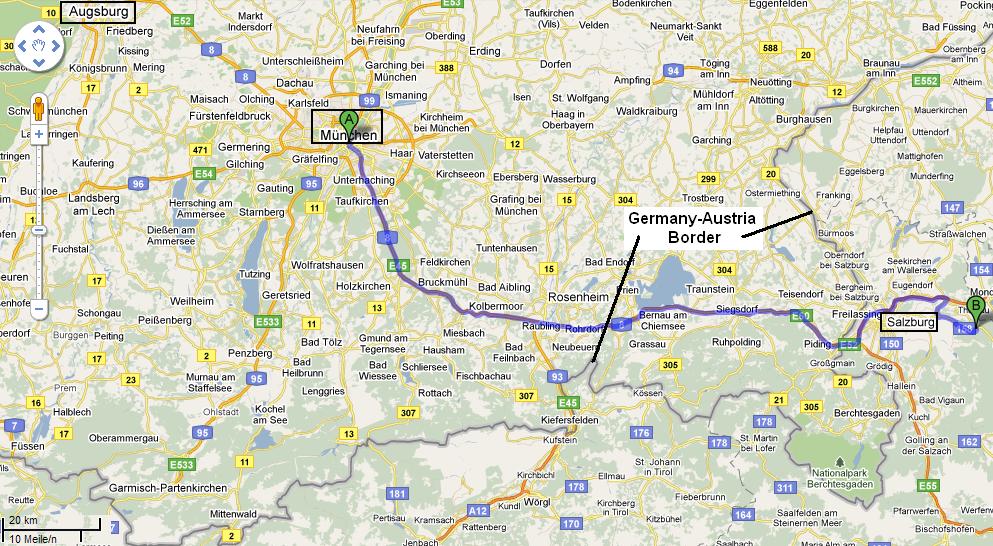
We continued past Salzburg into an area with many small Alpine lakes. It's a very popular weekend and vacation spot because you can hike, bike, swim, and sail. We ended in a town called Fuschl am See (Fuschl on the lake) -- the lake is called Fuschlsee, naturally. Interesting fact: Fuschl is the headquarters of Red Bull!
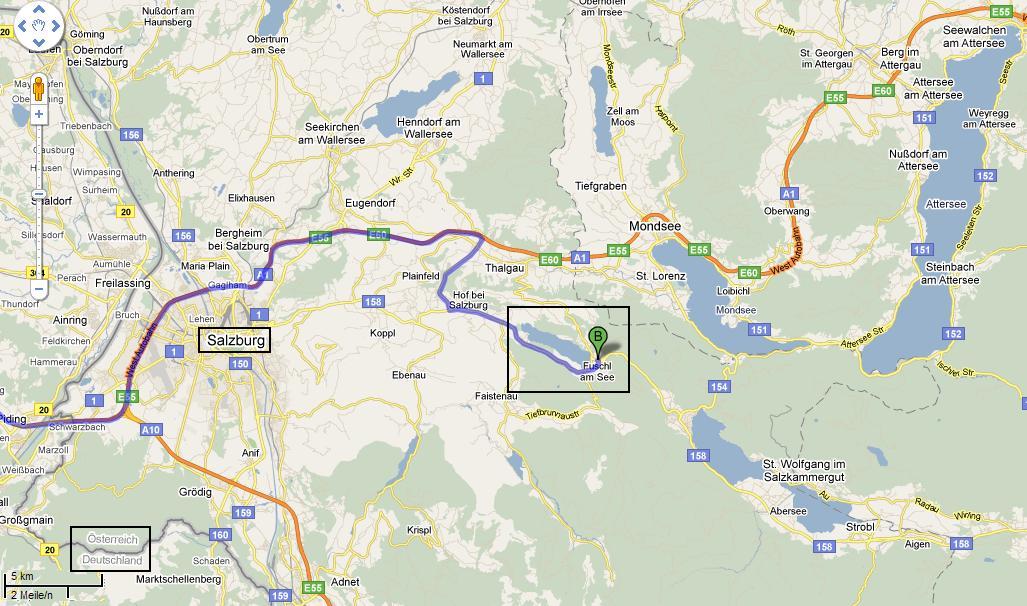
Near the southeastern corner of the lake is the trail head leading to two popular peaks: the Frauenkopf and Schober. The Frauenkopf is also called the Frauenstein (they mean "women's head" or "women's stone"). The trail (red dotted line on the map below) is numbered B10 by the Austrian Mountain Association and is rated "black" or difficult. It departs north and then circles east to the two destinations, marked with crosses. (I don't know what the third cross is for...)
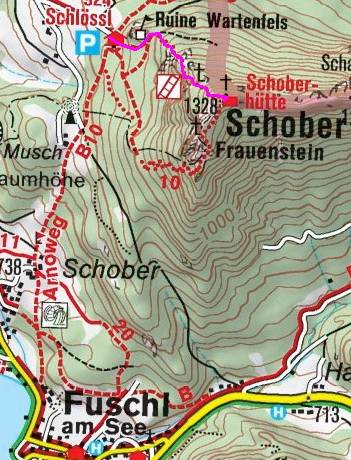
We decided to only climb to the top of the Frauenkopf rather than do the entire circle (we had something else planned in the afternoon). Here was the starting point, below, at lake level. At 9am, the weather was already sunny and warn, and the lake looked inviting (even more so after the hike).
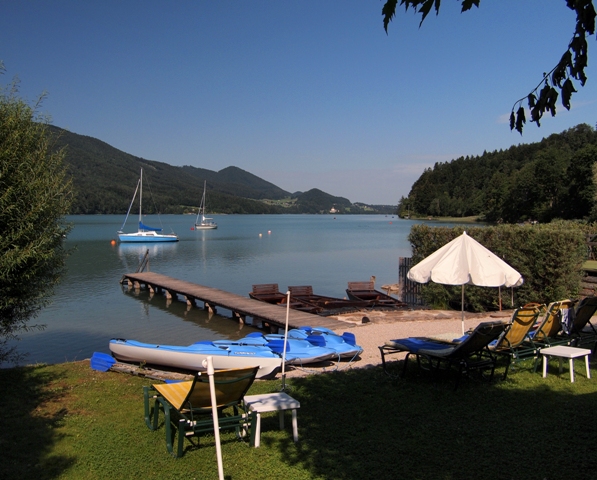
The lake lies at 924m above sea level, and the Frauenkopf sits at 1287m, so we the climb would be over 360m (1180 feet). For those of us that didn't grow up in the mountains, mountains always look so far away from the valley floor. "We're going up there?" said one of our guests!
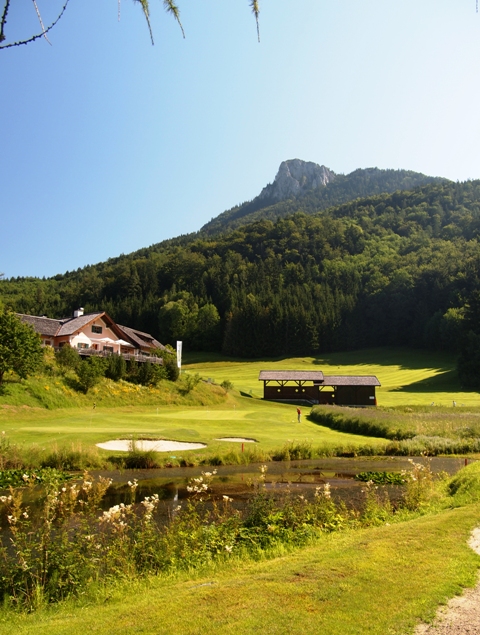
Did you notice the sand trap in the above photo? Yes, Fuschl has a golf course, and the trail goes right through it.
After walking through a field of wildflowers and past the golf course, we reach the woods. The trees are beautiful, and really keep you out of the sun & cool while starting the tougher part of the trail. The path itself has countless tree roots sticking up - don't turn an ankle.
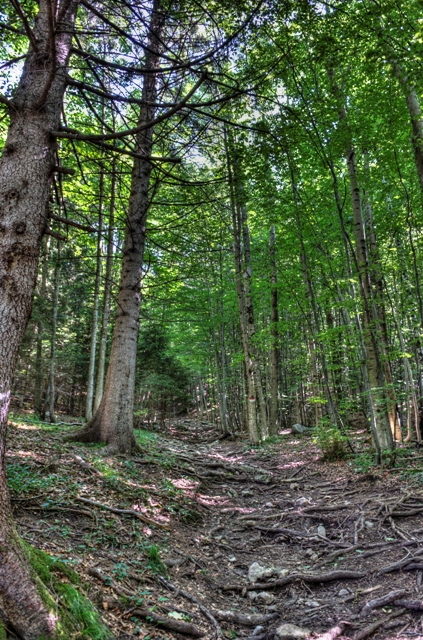
We then reached the fun part.... the trail starts snaking up the mountain steeply and is lined with gravel or rocks (in some places it's small rocks, in others gravel sized pebbles). The Austrian Mountain Association keeps it tidy, though, with maintenance throughout the year. Almost looks like they were dumped here...
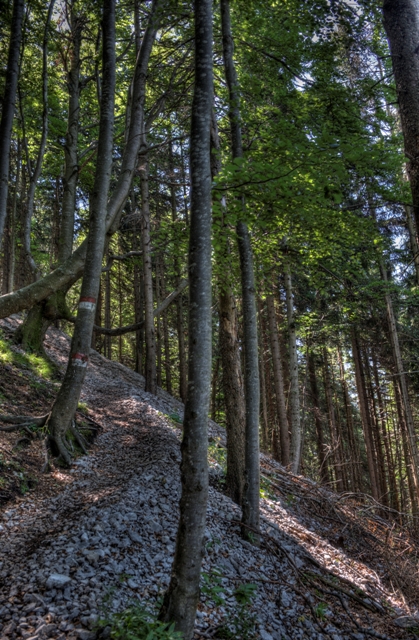
You can see how steep the mountain is from this view - luckily the path is full of switchbacks rather than a walk straight up!
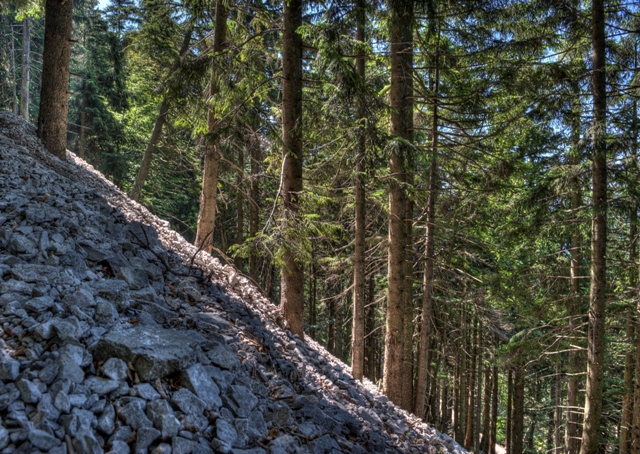
As we climbed higher, we solved the mystery of why (and how) the path was covered with rocks - they're actually natural slides from the material on the exposed peaks breaking off. Between the steep slope and the sometimes slippery rocks, you have to go relatively slowly. Luckily there are some spectacular views along the way - you can start to see the top, which helps when you're getting tired!
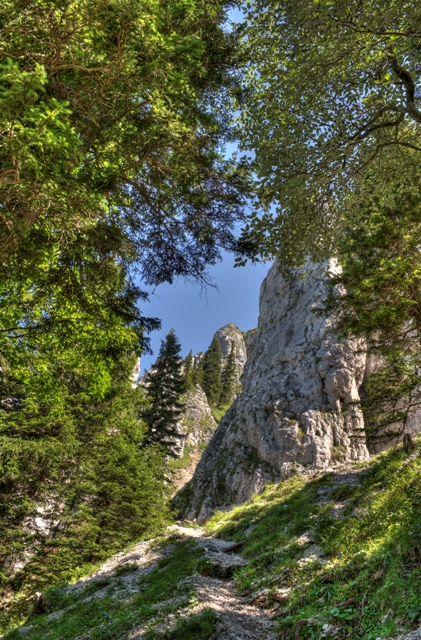
As we climb higher, we also get glimpses of the lake below.
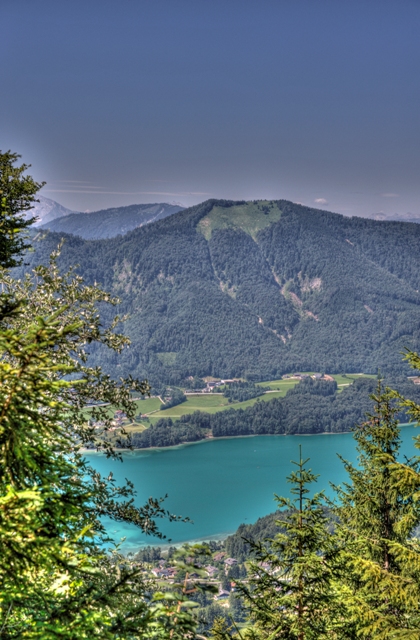
After a little stop for water and to enjoy the view, we start to head up the "summit". It starts with stairs that have been cut into the slope. These definitely help the ascent, though some of them are quite a tall step up!
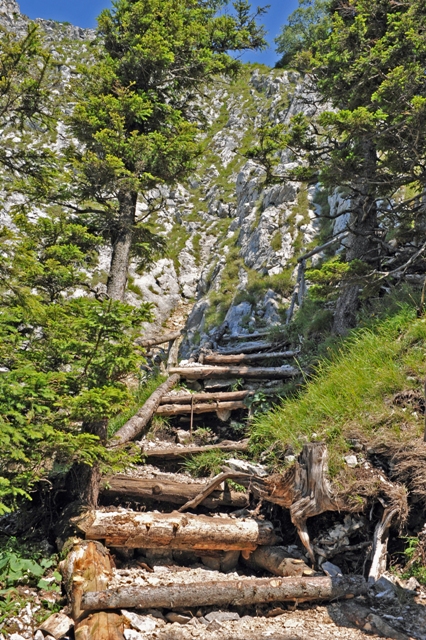
It's a little bit of a scramble to reach the last peak, but completely doable. We're rewarded with a gorgeous vista and a rocky ridge covered in scrubby little wildflowers. (You can see the golf course down below)
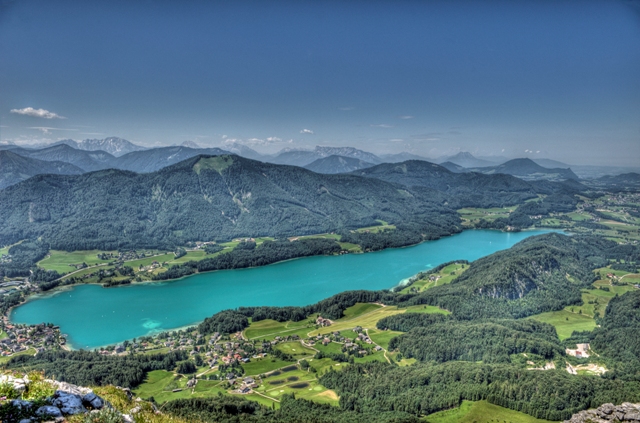
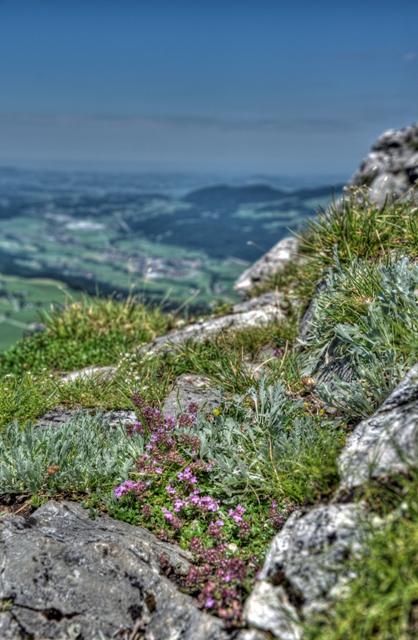
It always feels great to finally see the cross that adorns most peaks (even small ones like this). This also has a plaque saying Frauenkopf, and a stamp that you can use to show you made it. Frau A and I don't have a "book" but we can imagine locals having many dozens of stamps in theirs.
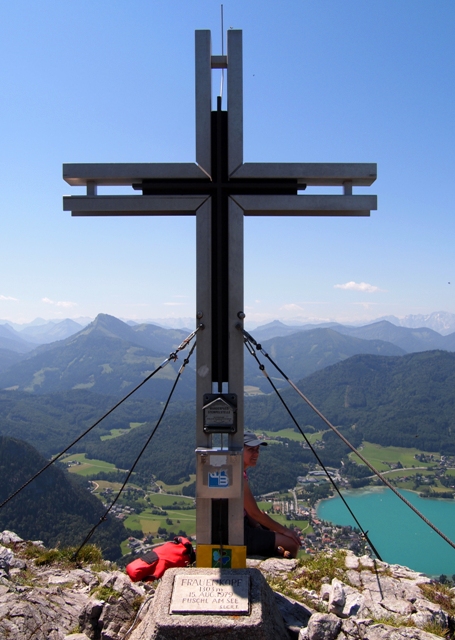
We got a nice photo of Mr. C enjoying the view (nothing like this in Dallas, huh?)...
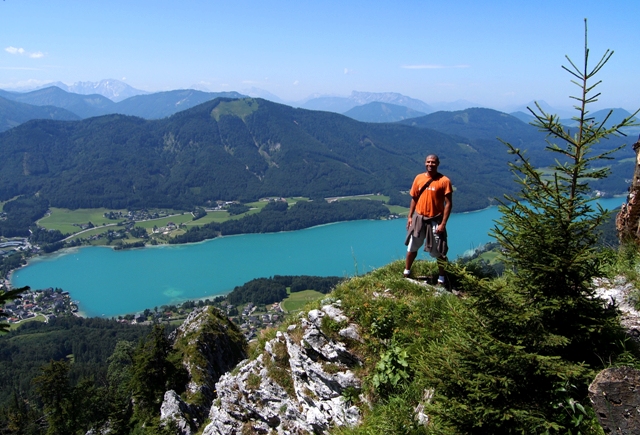
...and then himself capturing a picture of his lovely wife Mrs. M:
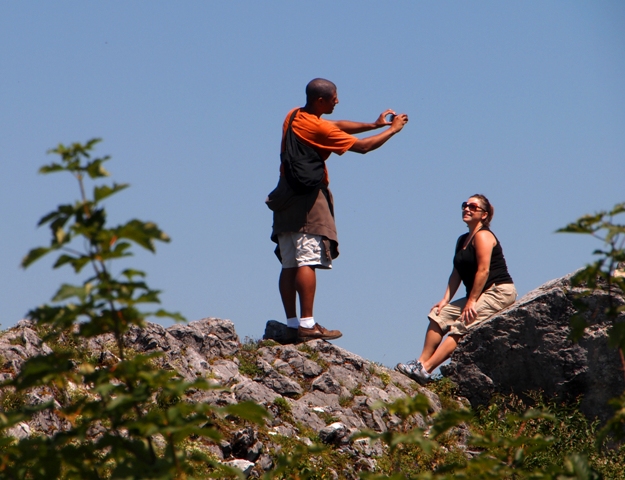
In the end, the linear distance there & back was about 6 1/2 km (a little over 4 miles). It took us about 2 3/4 hours up, and 1 1/2 hours down. The only hütte (Alpine hut) was at Schober, and we didn't go there, so there was no place to stop for refreshment on the way as usual! Tired and hungry, we lunched at a local "wellness" hotel , and then headed on to the afternoon activity... to be posted soon...
It was great to see friends, and there's no better place than in the Alps on a beautiful day.
Next time we'll tackle the Schober (seen here from atop the Frauenkopf)!

 Thursday, December 22, 2011 at 9:02
Thursday, December 22, 2011 at 9:02 











